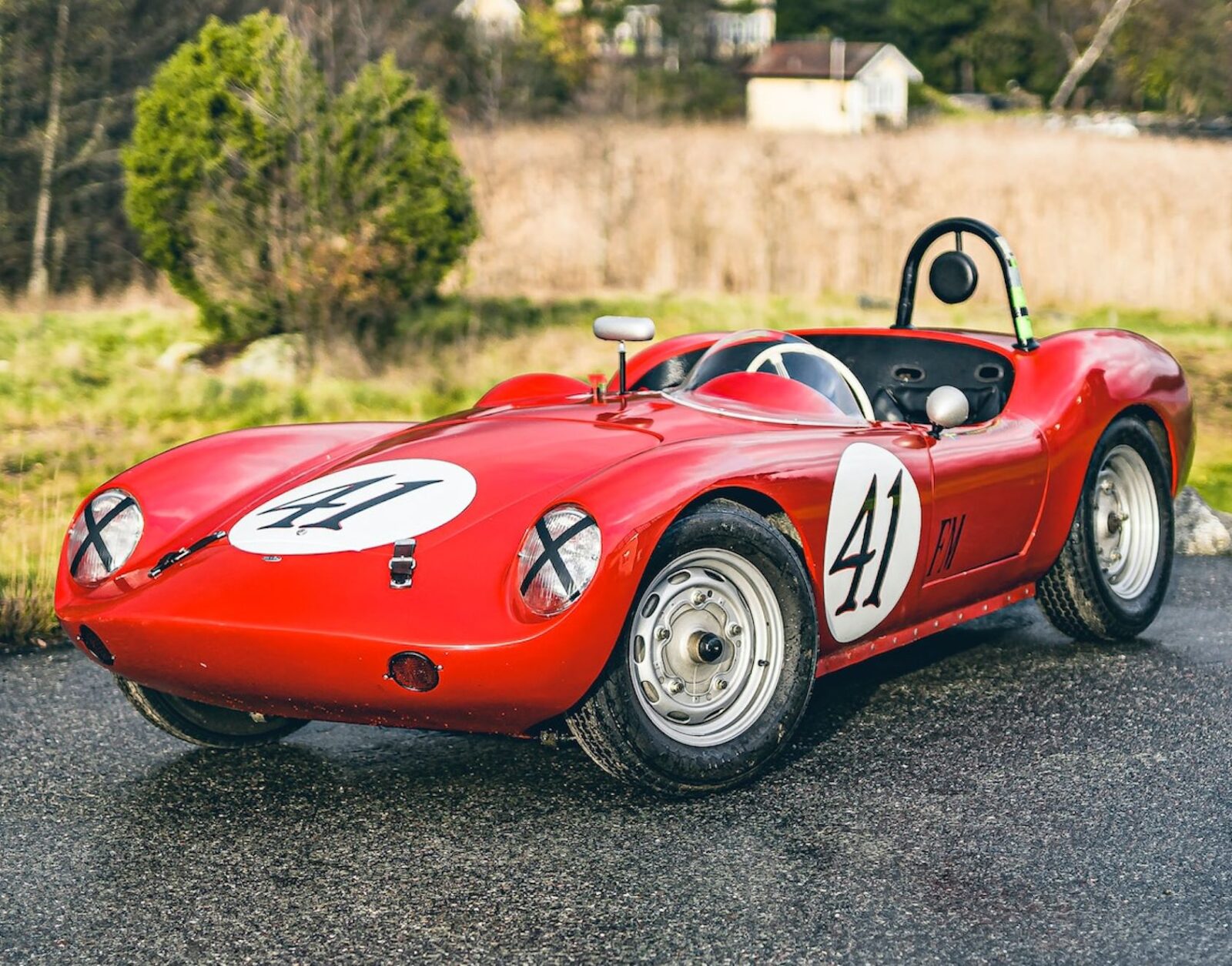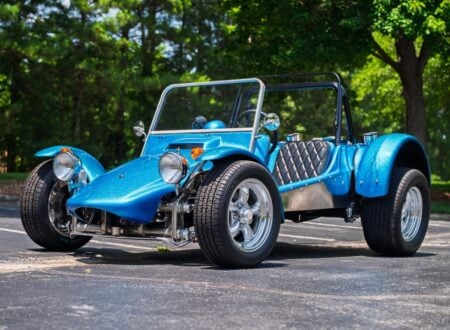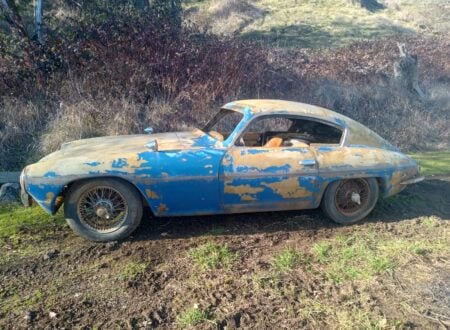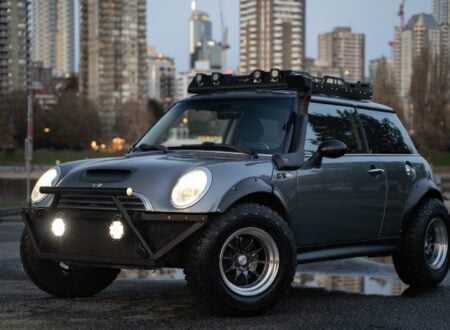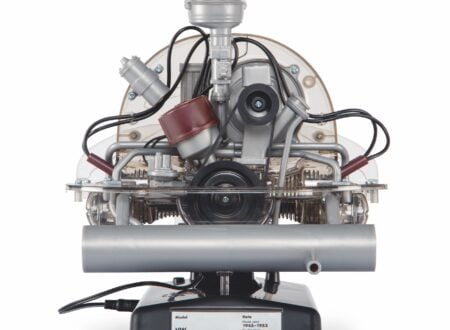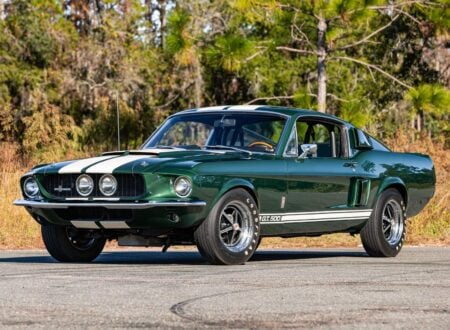This is a 1959 Devin-Porsche D, it’s an American designed and built sports car developed by Bill Devin – it entered limited production and quickly gained a reputation as a European sports car-killer.
The story of Devin is a true David vs Goliath tale, a small company from California rose up out of seemingly nowhere to take on the most famous sports car manufacturers in the world, and it regularly succeeded in beating them to the checkered flag.
Fast Facts – The Devin D
- Devin Enterprises was founded by Bill Devin, an American entrepreneur with a passion for sports cars and motor racing. Devin was involved in importing and selling European sports cars in the United States, his exposure to these vehicles inspired him to develop his own designs.
- The Devin SS, introduced in the late 1950s, became the company’s most famous model. It was a true American sports car equipped with a Chevrolet V8 and a lightweight fiberglass body. The SS was known for its excellent power-to-weight ratio and sharp handling.
- To cater to a broader market, Devin Enterprises produced the Devin D and C models. These were sold as kits, allowing enthusiasts to assemble their own cars using various engines, commonly from Volkswagen or Porsche.
- Devin cars gained significant acclaim in racing, especially in SCCA (Sports Car Club of America) events. Their agility, speed, and power often placed them well ahead of more established European brands.
Devin Enterprises: A History Speedrun
The founder of Devin Enterprises, Bill Devin, has been called “The Enzo Ferrari of the Okie Flats,” thanks to the fact that he was a larger than life figure who set up his own automotive manufacturing company, and through sheer force of will somehow took on the best in the world and won.
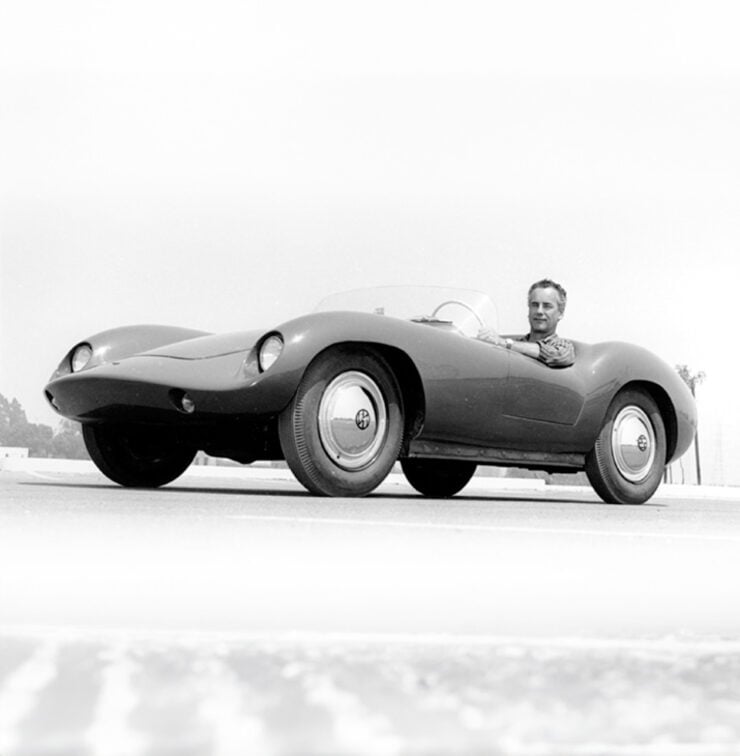

Bill Devin is best remembered today for the cars that he built, but what many don’t know is that he’s also the guy who came up with the idea of using toothed rubber timing belts in car engines to operate overhead cams.
As the story goes, Bill adapted the cylinder barrels and heads from the single overhead cam Norton Manx motorcycle engine engine to fit onto the crankcase of the two-cylinder boxer Panhard engine he was planning to fit to his Devin-Panhard sports car.
This was no mean feat, yet somehow het got all the parts together. The problem he faced was spinning the overhead cam. He approached the L. H. Gilmer company about using their toothed belts which had been developed to transmit power in textile mills without the need for chains or lubrication.
Bill got toothed belts made by Gilmer to his own specifications and much to his delight, they worked exceptionally well on his new Norton-Panhard engine and resulted in a far more capable engine than the Panhard motor had been when it left the factory.
Fatefully, Bill never applied for a patent for his invention, if he had it would likely have made him a very wealthy man as timing belts became incredibly popular in the automotive industry in the years that followed.
The First Devin Cars
The first cars to carry the Devin name were based on a chassis of his own design and powered by Panhard engines and transaxles. Bill had acquired a 1953 Deutsch-Bonnet Le Mans in a part-trade deal when selling his Ferrari 250 MM around the same time he bought out the stock of a Panhard dealer in California.
He designed a chassis, added the Panhard engine and transaxle, and then designed his own fiberglass body for the car based loosely on the Deutsch-Bonnet Le Mans. This would be the car that he developed the overhead cam Norton-Panhard engine for.
Devin Enterprises would begin selling fiberglass bodies in 1956, having become well-acquainted with the material the building the Devin-Panhards. Devin fiberglass bodies could be ordered from the factory in a number of wheelbase lengths to suit a variety of production car chassis, they could also be ordered with custom Devin chassis.


The company also offered a range of full production cars, often powered by either Volkswagen or Porsche engines, and all fitted with the firm’s lightweight fiberglass bodies. The three most famous Devin cars are the Devin SS, the Devin D, and the later Devin C.
The company would ultimately cease operations in 1964 due to the influx of lightweight sports cars onto the market that made their offerings less attractive to many buyers seeking a cheap turnkey solution.
Fortunately, the company was reformed in 2001 as Devin Sports Cars LLC of Glendale, California, then acquired by Devin Sports Cars LLC of Abington, Pennsylvania in 2019. The company is still in business to the current day.
The 1959 Devin D Shown Here
The car you see here is a 1959 Devin D, the name of the engine manufacturer is often added after a hyphen, so you can get Devin-Volkswagens, Devin-Panhards, Devin-Porsches, Devin-Triumphs, Devin-Chevrolets, and more.
This car was built in ’59 with a genuine Devin D body, it has a Devin-designed ladder-type chassis, Volkswagen front transverse torsion bars and trailing links, and rear single coil-over dampers and trailing arms.
Power is provided by a rebuilt, rear-mounted Porsche 1,598cc boxer flat-four engine, air-cooled of course, coupled to a 4-speed manual transaxle. The car is equipped for vintage racing, it has black hood straps, a small bubble windscreen, a driver’s side roll hoop, VDO gauges, a battery cut-off switch, a five US gallon foam-filled racing fuel tank, and a fire extinguisher.
It currently rides on 15 inch, 5.25-inch wide Porsche 356 steel wheels, fitted with Hoosier Vintage TD tires at all four corners, and it has drum brakes front and back. Inside you’ll find two black seats, a minimalist interior, and a cream Porsche three-spoke steering wheel.
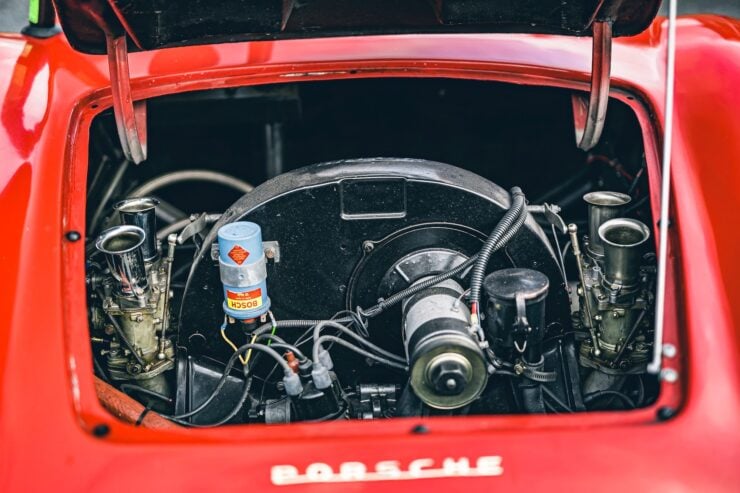

The current owner, now seller, bought this car in Washington back in 1999 and he’s owned it ever since. It’s covered just 2,000 kms in this time, 600 kms of which is said to have been on the race track, though its last race was back in 2004.
The car is now being offered for sale out of Stockholm, Sweden on Collecting Cars. If you’d like to read more about it or register to bid you can visit the listing here.
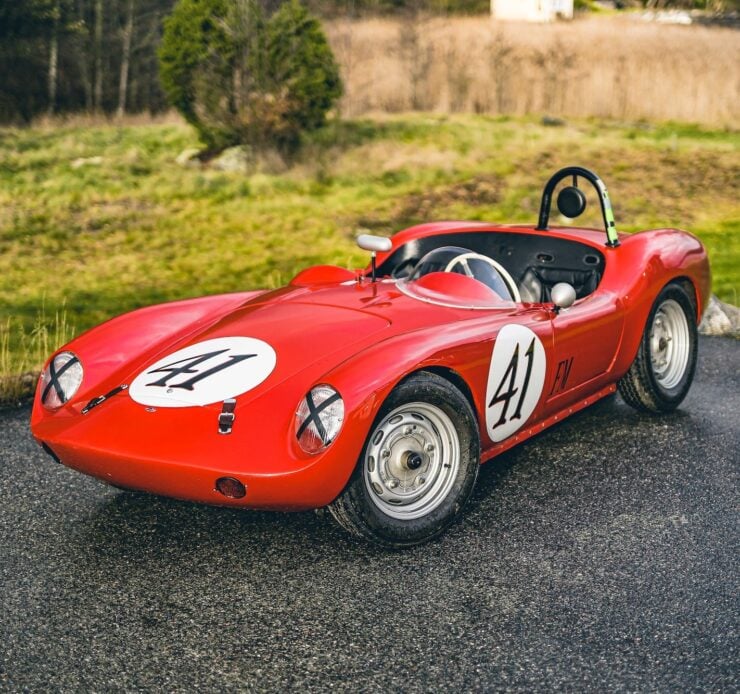
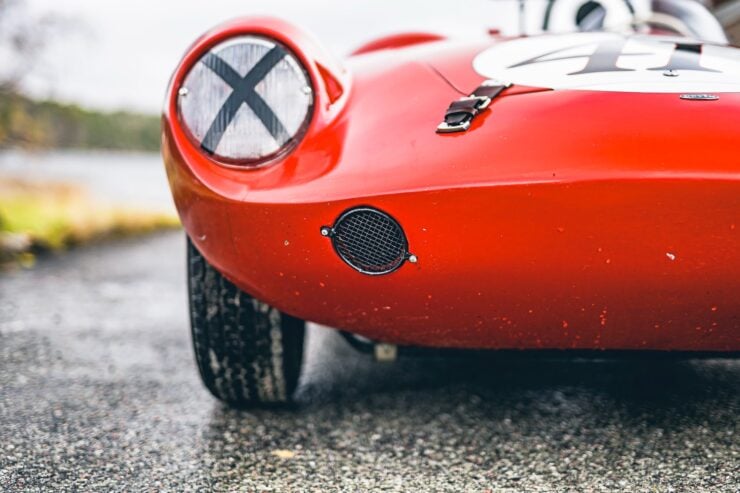
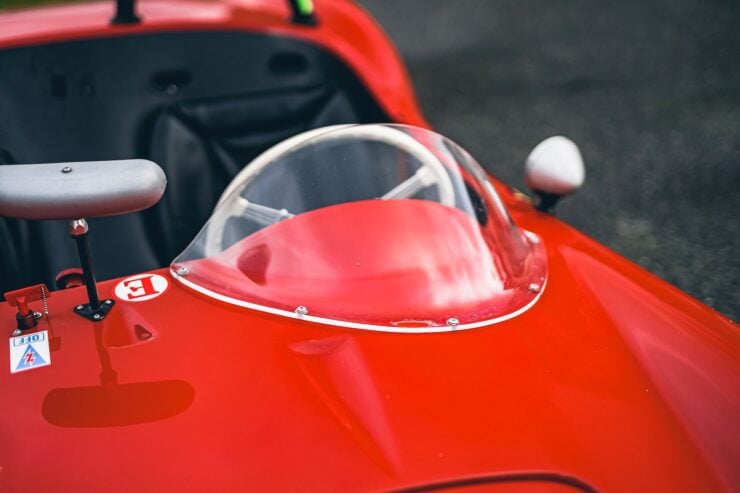
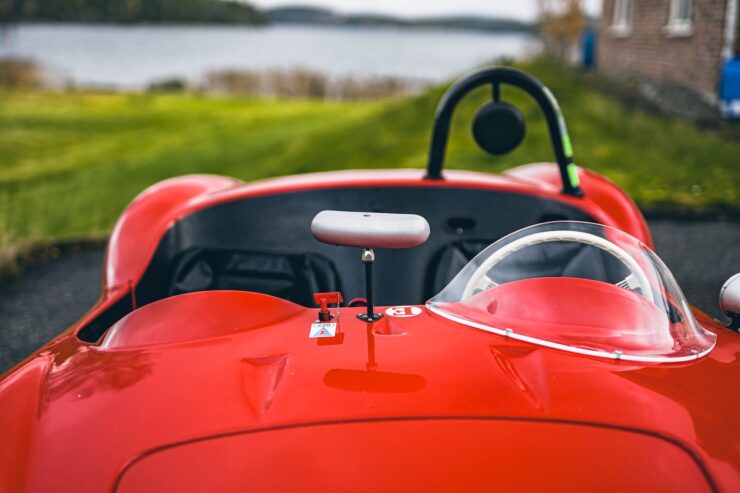
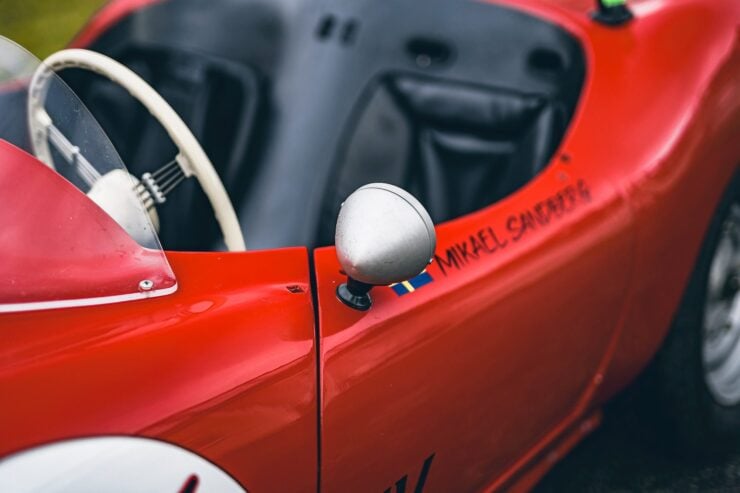
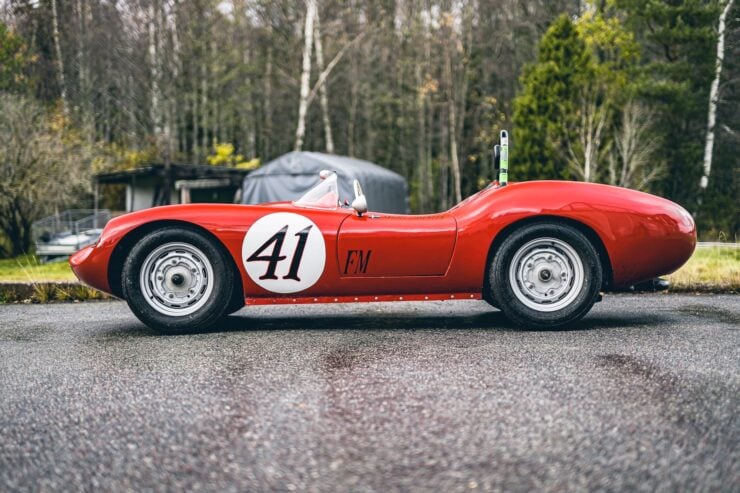
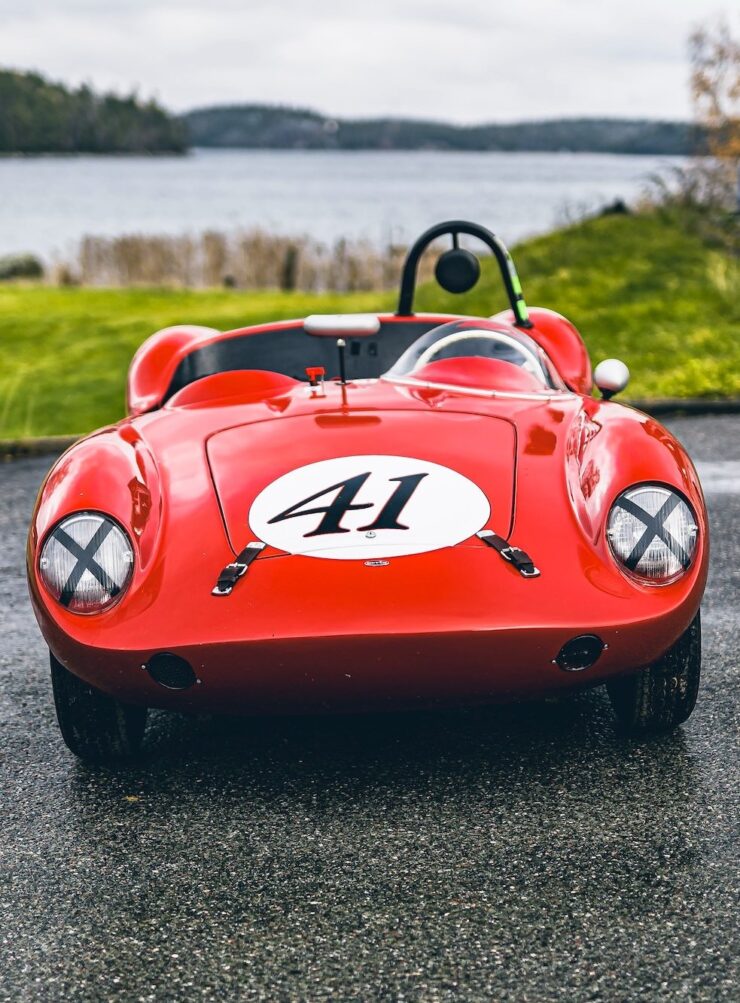
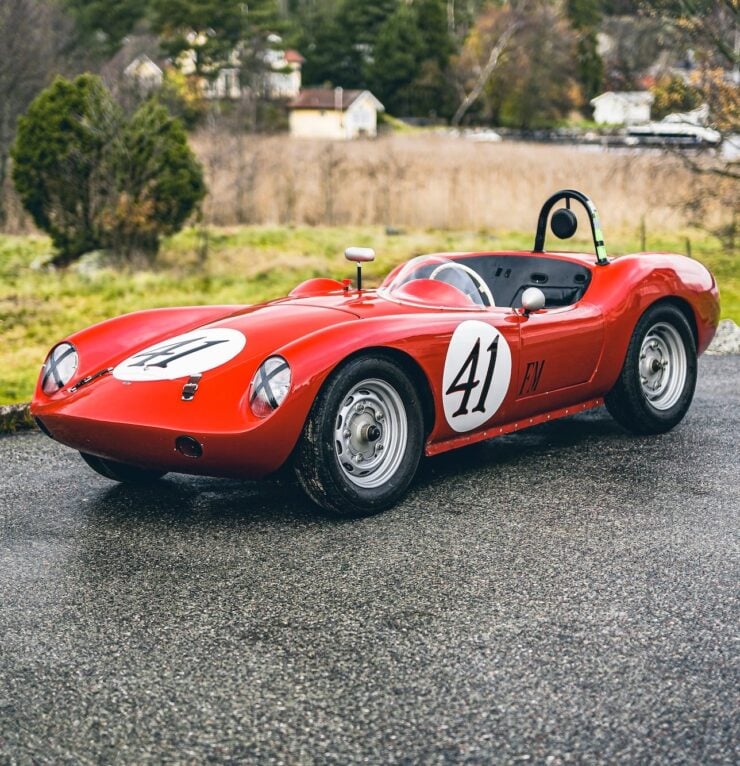
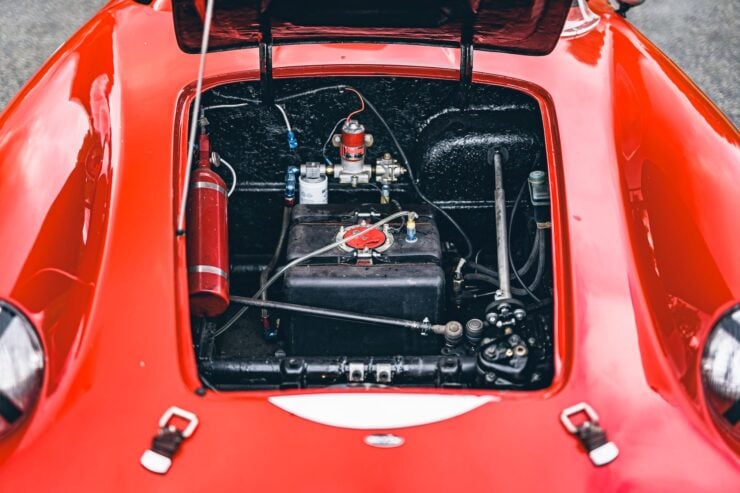
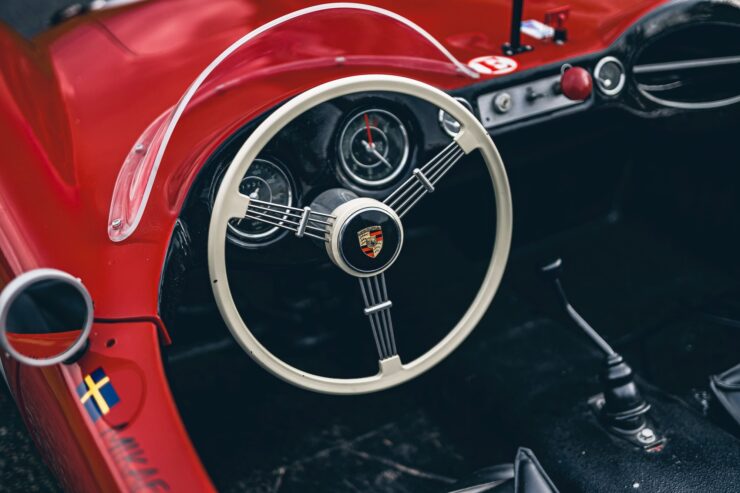

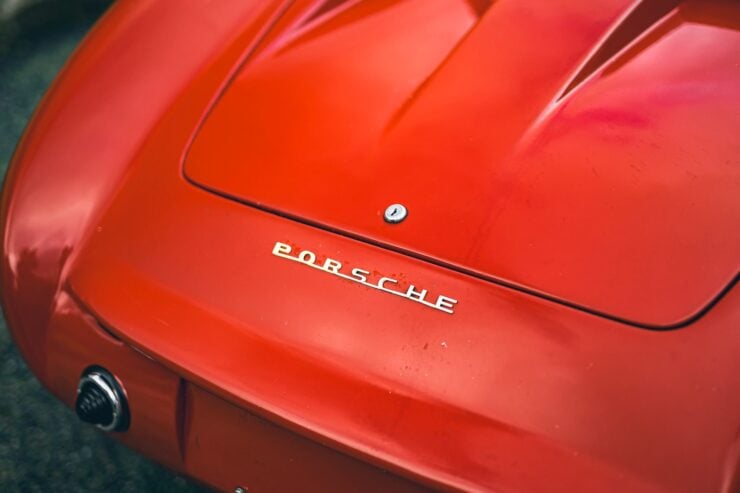
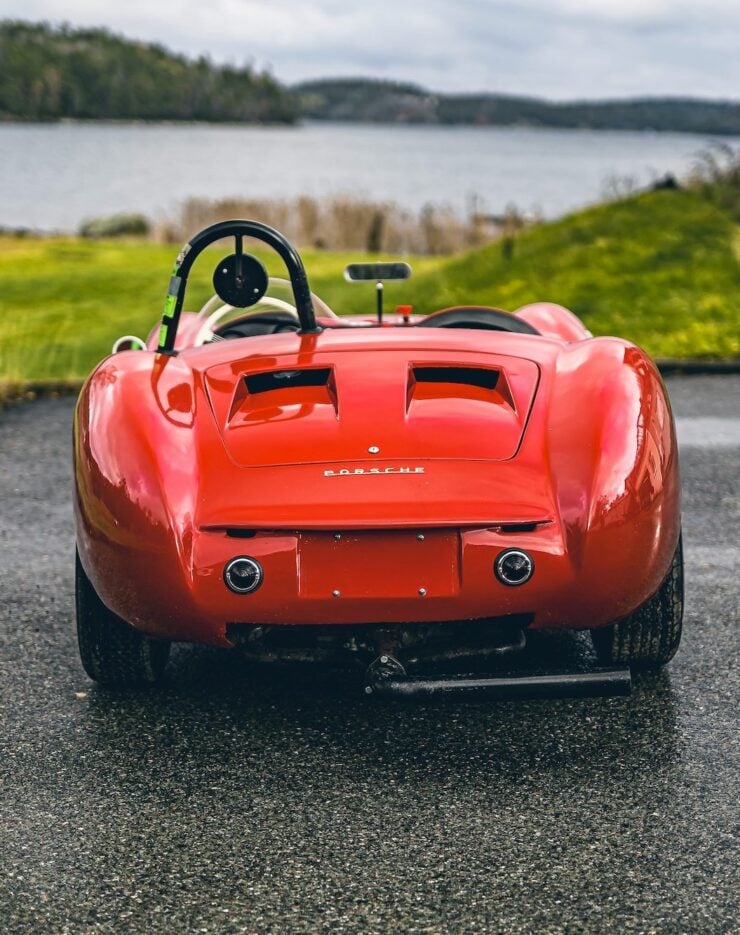
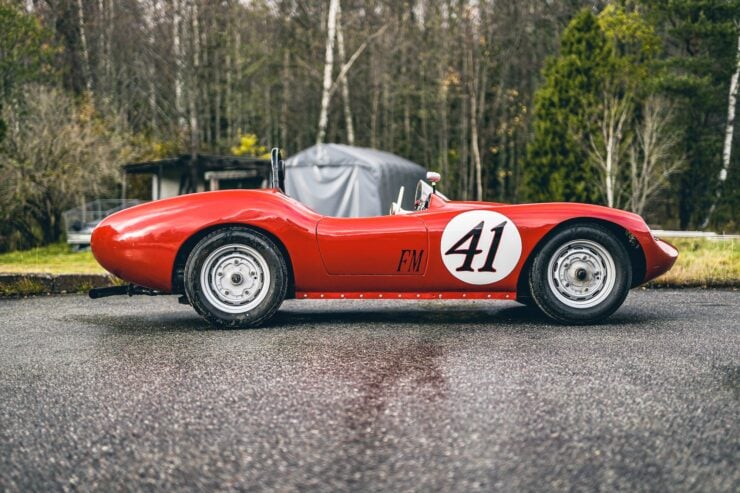
Images courtesy of Collecting Cars

